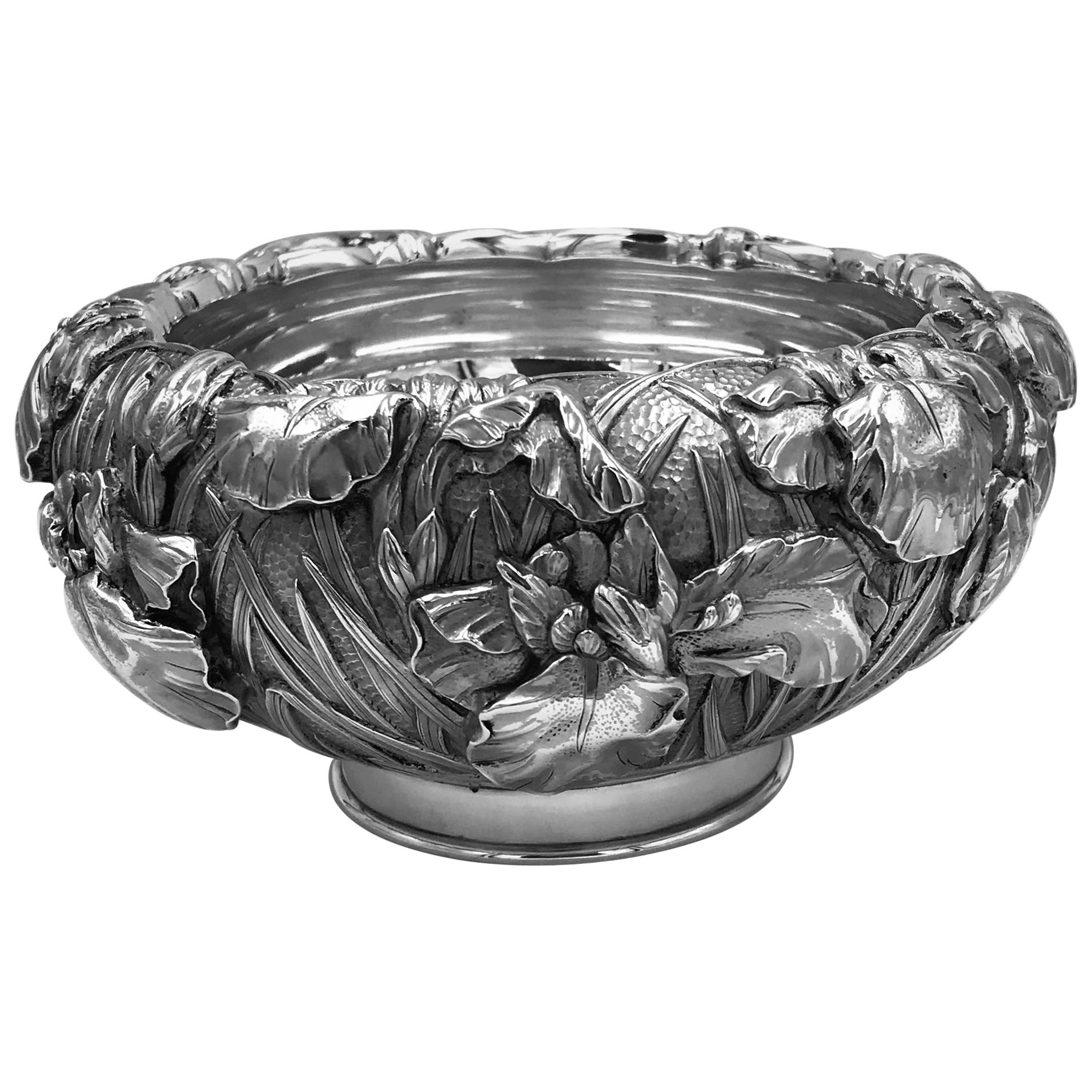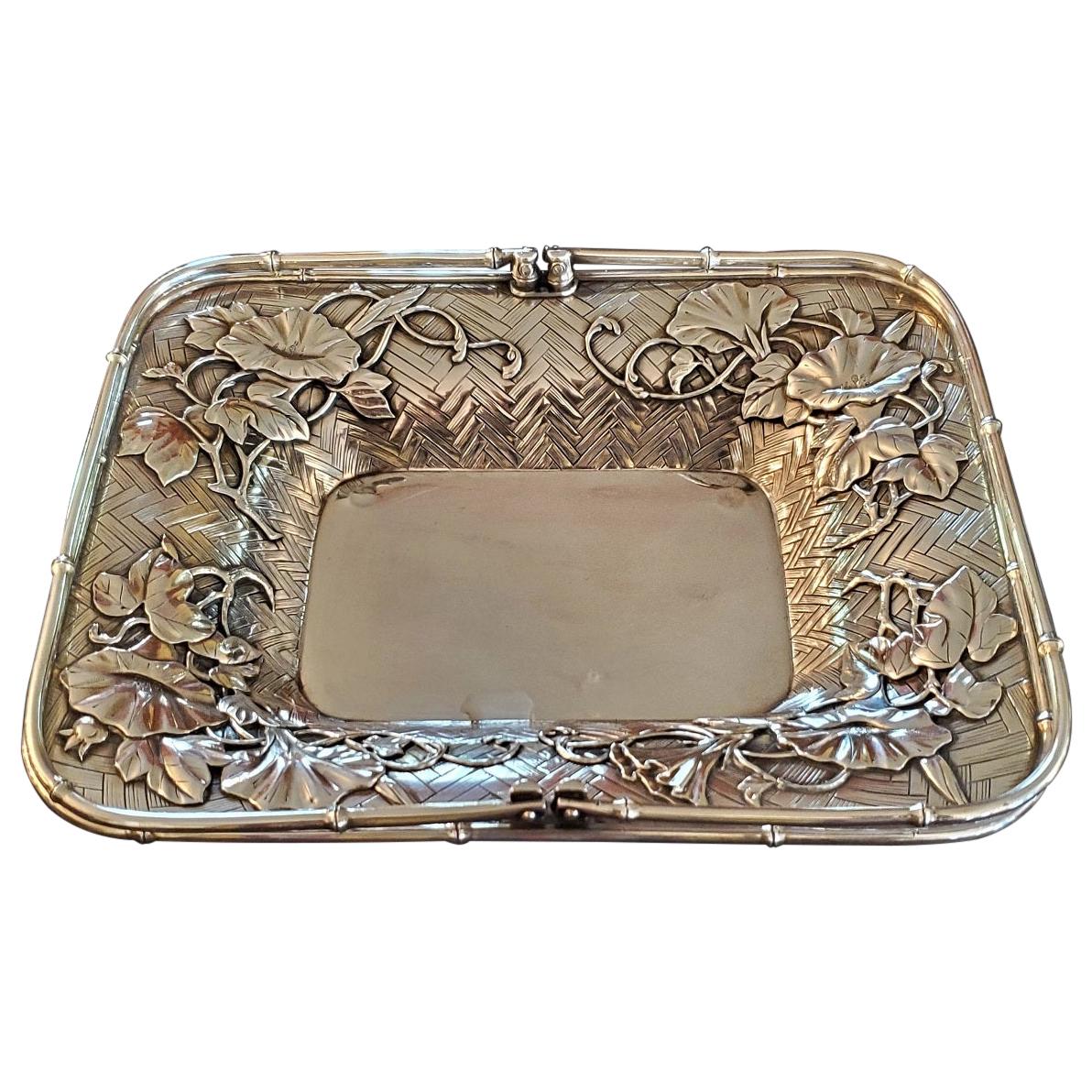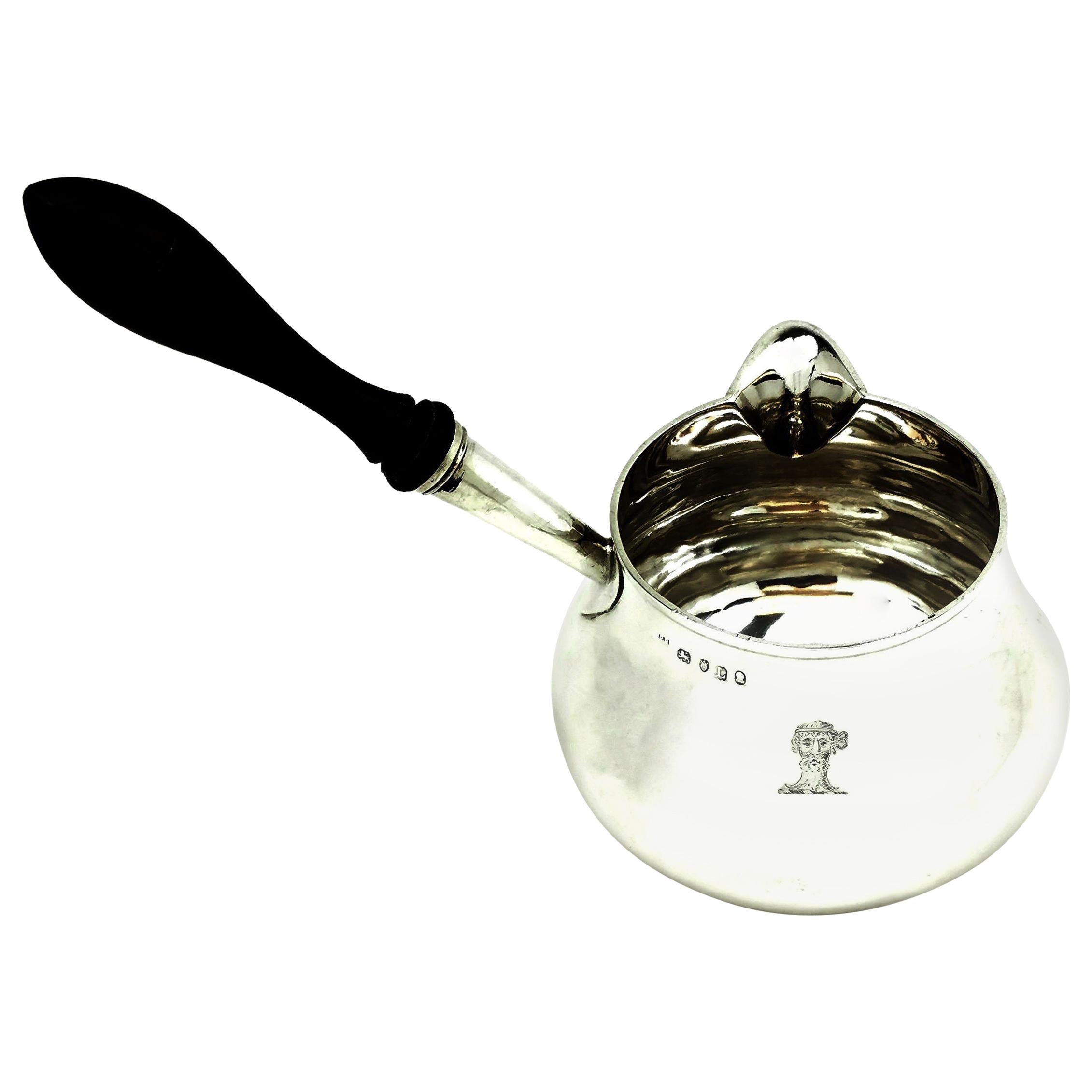Items Similar to Japanese Silver Rabbit Hand Warmer
Want more images or videos?
Request additional images or videos from the seller
1 of 12
Japanese Silver Rabbit Hand Warmer
About the Item
This Meiji silver rabbit hand warmer is the rarest of treasures. Taking the charming form of a well-fed lucky hare, this extraordinary object makes a monumental impact in pure silver.
Meiji-era hand warmers are quite rare, as they were used in the important tea ceremonies of samurais and nobles. By adding a mixture of sand, fragrant wood chips and heated charcoals to the vessel’s interior, one could warm both their hands in the intimate spaces of tea rooms. This rabbit-shaped example is particularly special in its delightful design, inviting guests to warm their hands on the adorable creature’s sides.
As finely crafted as it is endearing, this rabbit hand warmer was expertly crafted with 99.9% pure silver. Sterling silver consists of 92.5% pure silver which is combined with alloys to reduce pliability. Only very heavy objects could be created in 99.9% pure silver as anything less would not stand the test of time. Still in mint condition and accompanied by its original box, this exceptional objet d’art can serve its original purpose as a magnificent hand warmer, or it could be used as a serving dish or great centerpiece.
Newly liberated from their obligation to produce the finest weaponry for the samurai class, the esteemed Meiji metal artisans were free to pursue creative endeavors with renewed vigor. This unique rabbit hand warmer, with its precious materials and innovative form, captures the zenith of artistic achievement during the illustrious Meiji period.
Circa 1890-1900
Signed Eizan in Japanese
8" high x 9" wide x 11 1/2" deep (20.32 x 22.86 x 29.21 cm)
- Dimensions:Height: 8 in (20.32 cm)Width: 9 in (22.86 cm)Depth: 11.5 in (29.21 cm)
- Style:Meiji (Of the Period)
- Materials and Techniques:
- Place of Origin:
- Period:
- Date of Manufacture:Circa 1890-1900
- Condition:
- Seller Location:New Orleans, LA
- Reference Number:
About the Seller
5.0
Recognized Seller
These prestigious sellers are industry leaders and represent the highest echelon for item quality and design.
Established in 1912
1stDibs seller since 2010
93 sales on 1stDibs
Typical response time: 6 hours
- ShippingRetrieving quote...Ships From: New Orleans, LA
- Return PolicyThis item cannot be returned.
More From This SellerView All
- Fabergé Silver ServiceBy FabergéLocated in New Orleans, LAThis extraordinary 128-piece service by Fabergé is a rare treasure in more ways than one. Enclosed in its original oak chest, the exquisite service remains complete and in pristine condition—a feat given the rarity of Fabergé silver from this era. Featuring a full set of dinner and dessert flatware as well as 6 rare samovar teacups, this service is a testament to the unparalleled elegance of this world-famous firm. This exemplary set epitomizes the height of Fabergé silver craftsmanship, with each piece and its original fitted chest meticulously hallmarked with the Fabergé seal...Category
Antique 19th Century Russian Sterling Silver
MaterialsSilver
- Hunt & Roskell Silver-Gilt Presentation CupLocated in New Orleans, LAThis exquisite 1897 two-handled presentation cup by esteemed silver firm Hunt & Roskell was modeled after a 1743 cup made by Paul Lamerie, the most famed London-based silversmith of ...Category
Antique 19th Century English Victorian Sterling Silver
MaterialsSilver
- Rococo Silver Candlesticks by Alexander JohnsonBy Alexander JohnstonLocated in New Orleans, LAAn outstanding pair of sterling silver candlesticks by English silversmith Alexander Johnston. Reflecting the mid-18th century Georgian taste for the Rococo style, these candlesticks feature deeply chased decoration, from shells and palms to acanthus and rosettes, as well as an engraved armorial on each pedestal. Their exuberant yet balanced design is characteristic of the sophisticated style brought to England by French Huguenot silversmiths in the 1700s. Alexander Johnston first entered his mark in 1747 and work such as his, as well as that of artists like the celebrated Paul de Lamerie, indicated the adoption of French forms in all of the decorative arts, from furniture to textiles, hailing the dramatic shift from the more restrained classical manner. Excellent condition. Hallmarked London, 1751 10 ¾” high Reference: English goldsmiths and their marks, 2nd ed., 1921, Sir Charles James Jackson.Category
Antique 18th Century English Georgian Candlesticks
MaterialsSterling Silver
- Silver Gilt Portland Vase by Elkington & Co.By Elkington & Co.Located in New Orleans, LAThis magnificent silver-gilt Portland vase was crafted by the pioneering silversmithing firm of Elkington & Co. The iconic classical scenes are chased up...Category
Antique 19th Century English Neoclassical Sterling Silver
MaterialsSilver, Sterling Silver
- Chrysanthemum Silver Gilt Tazze by Tiffany & Co.By Tiffany & Co.Located in New Orleans, LAThis impressive set of four Tiffany & Co. silver gilt tazze displays the highly popular and distinctive Chrysanthemum pattern. Sheer brilliance of workmanship is what truly sets apart this timeless pattern, which is still considered Tiffany's finest and most elegant. The exuberant motif’s signature flower graces the scalloped rim of each dish, and extends down to the wide baluster stems and feet. Unlike most Tiffany Chrysanthemum silver...Category
20th Century American Art Nouveau Serving Pieces
MaterialsSterling Silver
- Chinese Export Silver Tea and Coffee ServiceBy Yu ChangLocated in New Orleans, LAThis stunning and complete seven-piece Chinese export silver tea and coffee service was crafted by Yu Chang of Shanghai and Hong Kong, a firm re...Category
Antique Late 19th Century Chinese Chinese Export Tea Sets
MaterialsSterling Silver
You May Also Like
- Japanese Silver BowlLocated in London, GBA fine Japanese silver bowl from the Meiji period of traditional double-skin, or double-wall, construction, showing especially detailed irises around...Category
Antique Early 1900s Japanese Meiji Sterling Silver
MaterialsSilver
- Edwardian Sterling Silver Rabbit Pin CushionBy Henry MatthewsLocated in Jesmond, Newcastle Upon TyneAn exceptional, fine and impressive antique Edwardian pin cushion modelled in the form of a rabbit; an addition to our animal related silverware collection. This exceptional, fine and impressive antique Edwardian cast sterling silver pin cushion...Category
Antique Early 1900s English Sterling Silver
MaterialsSterling Silver
- English Classical Sterling Silver Bun WarmerBy Roberts & Belk Ltd. 1Located in New York, NYGeorge V sterling silver bun warmer. Made by Roberts & Belk Ltd in Sheffield in 1927. Egg-form. Cover has flat oval top with radiating facets and lob...Category
Vintage 1920s English Neoclassical Revival Sterling Silver
MaterialsSterling Silver
- Japanese Silver BowlLocated in London, GBA Meiji period Japanese silver bowl with extremely detailed iris decoration and of typical double-skin form. The bowl dates form circa 1895 and was made by Katsuzo Mune, and their ma...Category
Antique Late 19th Century Japanese Metalwork
MaterialsSilver
- Japanese Meiji Period Sterling Silver 2 Handled Basket by Katsu MiyamotoBy Miyamoto Shoko 1Located in Dallas, TXPRESENTING a GORGEOUS, VERY HIGH QUALITY and EXTREMELY RARE piece of Japanese Meiji Period Sterling Silver 2 Handled Basket by Katsu Miyamoto. EXQUISITE, EXCEPTIONAL, RARE & IMPORTANT! This is definitely a Meiji Period piece due to the fact that it is marked with the sterling silver mark “jungin”. The Meiji period was from 1868 to 1912 and in 1928 a law was introduced in Japan compelling the use of decimal marks for silver. This pre-dates that decimalization law. We are of the opinion that it is from circa 1900. Miyamoto Shoko was founded in 1880 as the first silverware specialty shop. In 1899, Miyamoto Shoko’s silverwares were ordered by the family members of the Emperor of Japan, and to this day, they are making fine and graceful handicrafts with skillful craftsmen. Loved by numerous customers since the Meiji era, Miyamoto Shoko’s products have also been given to Princess Mako and Princess Kako of Akishino, as well as Princess Aiko Toshinomiya, on their birthdays. Katsu Miyamoto (宮本勝), in 1880, in order to increase the sales of tobacco and cigarettes to foreigners founded the Moyamoto Shoko company, which produced different silverwares in general and particularly silver cigarette cases. Miyamoto’s first name, Katsu (勝) in some sources is written as “Masaru”, since 勝 kanji can be pronounced in both ways. This basket is of the HIGHEST QUALITY imaginable! The top of the basket has the MOST GORGEOUS repousse work of flowers, probably lotus flowers, with leaves and foliage. It has an underlying chevron effect chasing, reflecting parquetry. The 2 handles are cast in the form of bamboo handles. The rim of the top likewise is cast as bamboo. The base is equally stunning in a different way! It is chased with a chevron effect, like parquetry flooring and the four feet simulate pieces of sliced bamboo with an interlinking gallery of support columns, likewise, simulating bamboo. The QUALITY of WORKMANSHIP is OUTSTANDING! The pieces weighs exactly 525 grams. This piece takes my breath away! This is one for the SERIOUS COLLECTOR of EXQUISITE AND RARE Japanese silver. You will not find another like it, for sale ANYWHERE ELSE IN THE WORLD …… I know as I have searched! Provenance: Acquired from a Dallas Private Collector. Dimensions: 9.6 inches wide, 7.6 inches deep and 2.75 inches tall ( 7.25 inches tall with handles up) Condition: Very good. It looks like the base 4 legged gallery, has been repaired/re-attached to the base, but otherwise it is excellent and of Museum quality. The Meiji period (明治時代 Meiji-jidai?), also known as the Meiji era, is a Japanese era which extended from October 23, 1868 through July 30, 1912.[1] This period represents the first half of the Empire of Japan during which Japanese society moved from being an isolated feudal society to its modern form. Fundamental changes affected its social structure, internal politics, economy, military, and foreign relations. The period corresponded with the reign of Emperor Meiji after 1868, and lasted until his death in 1912. It was succeeded by the Taishō period upon the accession of Emperor Taishō to the throne. Solid silver pieces...Category
Early 20th Century Japanese Meiji Metalwork
MaterialsSterling Silver
- Antique Georgian Sterling Silver Brandy Warming Pan, 1806Located in London, GBA Classic antique George III solid Silver Brandy Warmer with a wooden handle. The Brandy Pan has a traditional baluster shaped body and features a crest eng...Category
Antique Early 19th Century English Georgian Sterling Silver
MaterialsSterling Silver
Recently Viewed
View AllMore Ways To Browse
Sterling Japan
Japanese Side Box
Sterling Warmer
Japanese Metal Box
Metal Box Japan
Silver Box With Wood Interior
Japanese Tea Sign
Japanese Tea Box
Lucky 9
Zenith Original
Metal Rabbits
Antique Japanese Silver Box
Monumental Box
Rabbit Box
Japan Tea Box
Silver Antique Japanese Boxes Silver Boxes
Antique Tea Warmer
Rabbit On Stand





